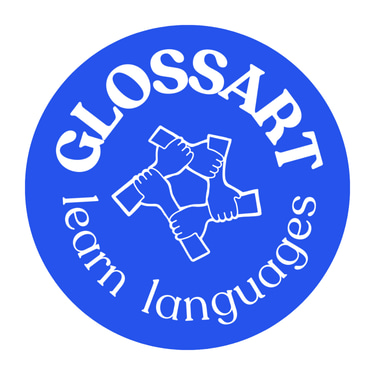Transform Your World with Language Learning at GlossArt Languages!
How to Learn Two or More Languages at the Same Time: A Practical Guide
Want to learn two languages at the same time without going crazy? This practical guide gives you 8 proven strategies—from goal setting and study scheduling to language immersion and tech tools. Whether you're learning for travel, work, or personal growth, discover how to succeed without burnout. 📚✨ Multilingual goals start here!
Evangelia Perifanou
11/12/20233 min read


🌍 How to Learn Two or More Languages at the Same Time: A Practical Guide
By Glossart Languages
Learning multiple languages at once can seem overwhelming, but it’s absolutely achievable with the right strategies, mindset, and tools. Whether you’re inspired by travel, career opportunities, or personal growth, becoming fluent in two or more languages is a rewarding and enriching journey. In this article, we’ll walk you through practical steps and powerful tips to help you successfully manage learning more than one language at the same time.
1. Set Clear Goals for Each Language
Before diving into language learning, it’s essential to define your goal for each language. Ask yourself:
– Why am I learning this language?
– Is my focus on speaking, reading, or writing?
– Am I learning for professional, travel, or cultural reasons?
Setting specific goals will help you track your progress and stay motivated.
💡 Example:
Language A: Reach conversational fluency in 6 months.
Language B: Be able to read novels in the original language in 12 months.
Clear goals prevent burnout and give you a real sense of purpose.
2. Keep Your Study Materials Separate
Avoid mixing languages by organizing your resources clearly. Try:
Separate notebooks or digital folders for vocabulary and notes
Using different apps (e.g., Duolingo for one language, Babbel for another)
Listening to different podcasts or playlists for each language
This will help your brain build clean mental “folders” and reduce confusion between words or grammar rules.
3. Build a Balanced Study Schedule
Learning two languages takes time management and care. Don’t force equal study time if it doesn’t fit your life. Instead, adjust based on your availability and goals.
Try these strategies:
Focus on one language per day (e.g., Spanish on Mon-Wed-Fri, French on Tue-Thu-Sat)
Pomodoro method: 25 minutes with one language, then 25 minutes with the other
Weekly goals: Learn 10 new words, complete one chapter, or write a short paragraph in each language
✔️ The key is consistency, not perfection.
4. Use Similarities Between Languages (Carefully!)
If the languages you’re learning are related (like Spanish and Italian or French and Portuguese), use those connections to your advantage.
But be careful with language interference—such as false friends or applying grammar rules from one language to another incorrectly.
Always build a solid foundation in each language individually before blending skills.
5. Immerse Yourself in Both Languages
Immersion is one of the most powerful methods—yes, even if you're learning multiple languages.
Try:
🎧 Listening: podcasts, music, TV shows in each language
🗣️ Speaking: language exchange
📖 Reading & Writing: articles, social media, journaling, or even short stories
🏷️ Labeling: put sticky notes on household items in both languages
Switching between languages during your day builds mental flexibility and real communication skills.
6. Embrace Slow Progress and Avoid Burnout
Learning more than one language can feel like a lot, especially at first. Remember: language learning is a long-term journey, not a race.
Tips to stay on track:
Master the basics (greetings, essential vocab, simple grammar) before diving deep
Break learning into manageable pieces
Celebrate small wins
Take regular breaks—quality over quantity
7. Use Tech to Your Advantage
There are so many tools to help you stay organized and inspired.
Some of our favorites:
🧠 Flashcards: Anki, Quizlet
🌍 Translators: DeepL, Google Translate
🎤 Speaking Practice: HelloTalk, Tandem,
8. Stay Motivated and Be Flexible
Motivation is everything. Celebrate your achievements (even small ones!), and don’t be afraid to adjust your schedule or goals if one language requires more time than expected.
Join online language learning communities or local meetups—it’s easier to stay accountable and inspired when you’re not alone.
🎯 Final Thoughts from Glossart Languages
Learning two or more languages at the same time is a challenge, but a truly empowering experience.
With clarity, balance, immersion, and the right tools, you can reach fluency without stress.
✨ Stay consistent.
✨ Be patient.
✨ Keep a positive mindset.
You’ve got this!
Happy learning from all of us at Glossart Languages! 💙
#GlossartLanguages #LanguageTips #MultilingualLife #PolyglotGoals #LearnLanguages #LanguageLearningJourney #FluencyGoals #StudySmart #BilingualChallenge #LanguageMotivation #LanguageLearningTips #Duolingo #Memrise #LanguageTeacher #LanguageLearner #SpeakSpanish #LearnFrench #LanguageCommunity


